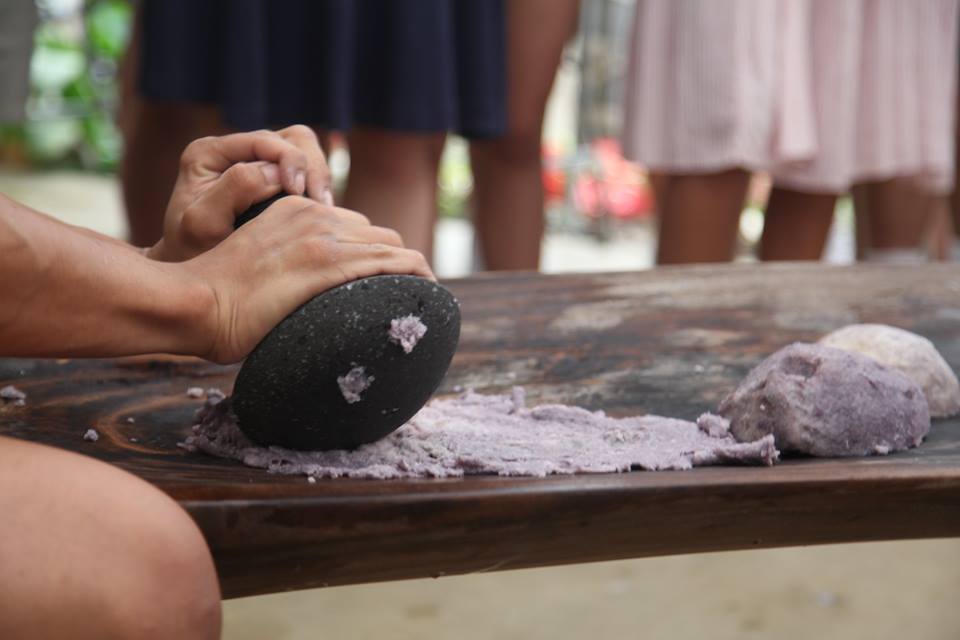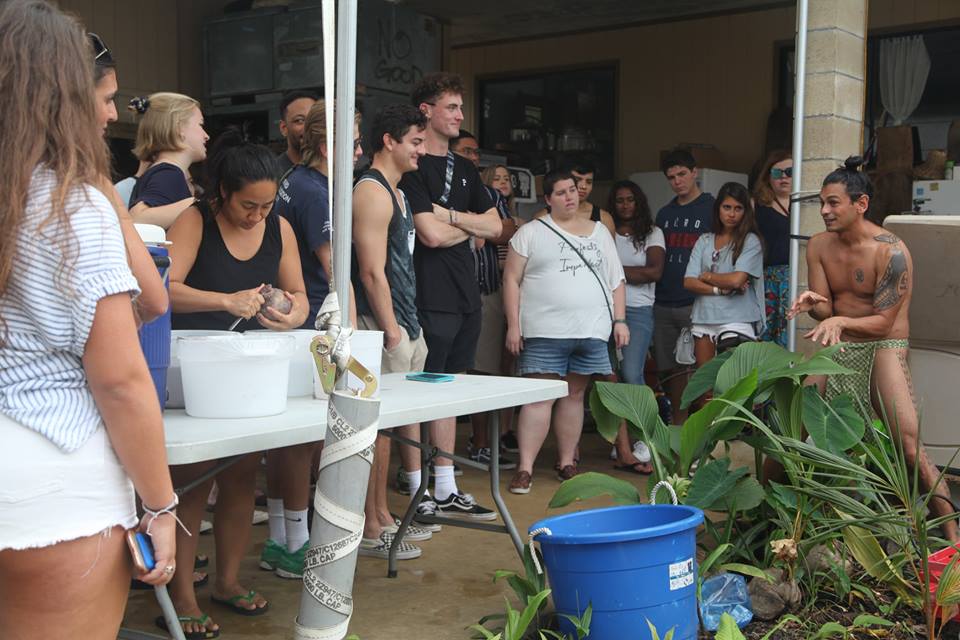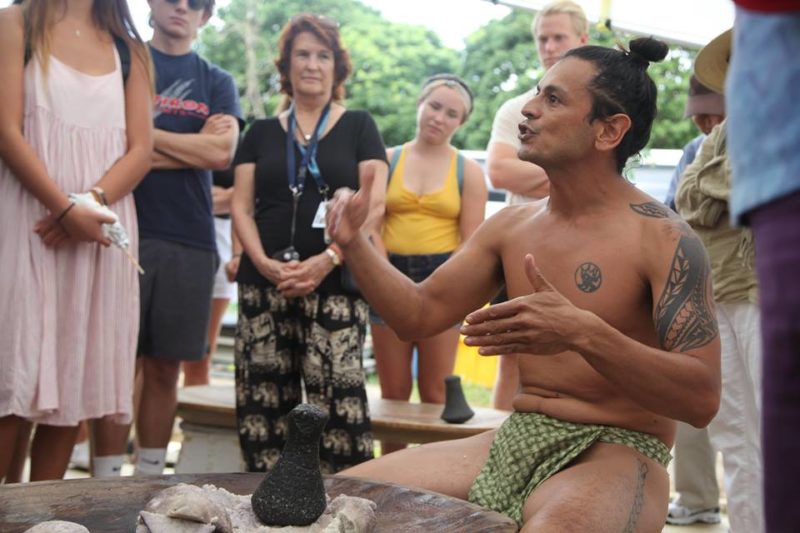Mana Ai is a small business located in Kaneohe, part of the ancient Koolaupoko district of Windward Oahu. Mana Ai provides sustainably-grown taro products to consumers in Hawaii and around the world.
Sustainable agriculture and resource management were vital to the success of the first Polynesians to arrive in the Hawaiian Islands many hundreds of years ago. Native Hawaiians perfected the concept of sustainability long, long before terms like “eco-friendly” and “GMO or gluten-free” became part of the popular vernacular. Mana Ai continues those centuries-old practices as they were implemented by the ancients.
While the traditional Hawaiian diet included portions of pork, fish, and fruits, taro was the single most important food source for Hawaiians. Nowadays, we call plants like taro “superfoods”. Full of nutritious starches, taro prepared as poi was truly life-sustaining for the native population. A strict kapu system was in place to allocate fresh water with severe penalties, including exile and death, for those who failed to heed the laws protecting natural resources. Taro cultivation remains a vital part of native Hawaiian culture.

Mana Ai honors those cultural practices by supporting farmers who adhere to the ancient traditions and respect for the land. It sells the taro products paiai and poi. Most will be familiar with poi, the purplish paste that for some is an acquired taste. Paiai is poi made with less water and can be cut into patties or formed into cakes. It can be pounded into poi using more water, or fried, roasted or stewed.
The products sold by Mana Ai are pounded by hand, a practice Mana Ai helped resurrect in 2011 after it was lost to mechanical innovations over the decades. Mana Ai also operates several dry land taro patches in Windward Oahu. There were over 300 varieties of taro in the Hawaiian Islands before initial Western contact. With the push toward westernization, many Hawaiian foodways were lost. Today there remains about 100 varieties of taro grown in Hawaii.
We blog about Hawaii
because we love Hawaii.
Mana Ai’s to the preservation of native Hawaiian foodways and cultural practices extends beyond their work procuring, pounding, and selling taro products. They are deeply involved in community efforts that include education, youth outreach, and community service. And Mana Ai’s commitment to its farmers is clear. Major taro producers pay less than a dollar per pound to farmers for their taro. Mana Ai pays no less than $2 per pound to its farmers and sometimes up to $3.50 per pound for rarer varieties of taro.
Let’s be honest: the taste of poi is not for everyone. It can be gritty and sour (as some prefer) or mixed with sugar to add sweetness. The most common visitor complaint about poi is that “it tastes like dirt.” That may be the case, but for those born and raised in Hawaii, it is the taste of home.

It can be a snack by itself or part of the spread at a Hawaiian luau (I prefer to dip a meaty chunk of smoked kalua pig into a bowl of poi). Food lovers will appreciate its texture and subtle flavor profiles. And some just won’t care for it. Taro and poi have been adapted into more mainstream Western dishes like cupcakes or salted chips available almost everywhere in Hawaii.
Hawaii vacationers are invited to visit Mana Ai, and to learn more about Hawaii’s most famous food. You can dig deeper into native Hawaiian culture. You can learn more about how sustainable agriculture and resource management served as the cornerstone of a native Hawaiian civilization that lasted hundreds of years. Mana Ai is one of the important organizations that are preserving that ancient legacy.




